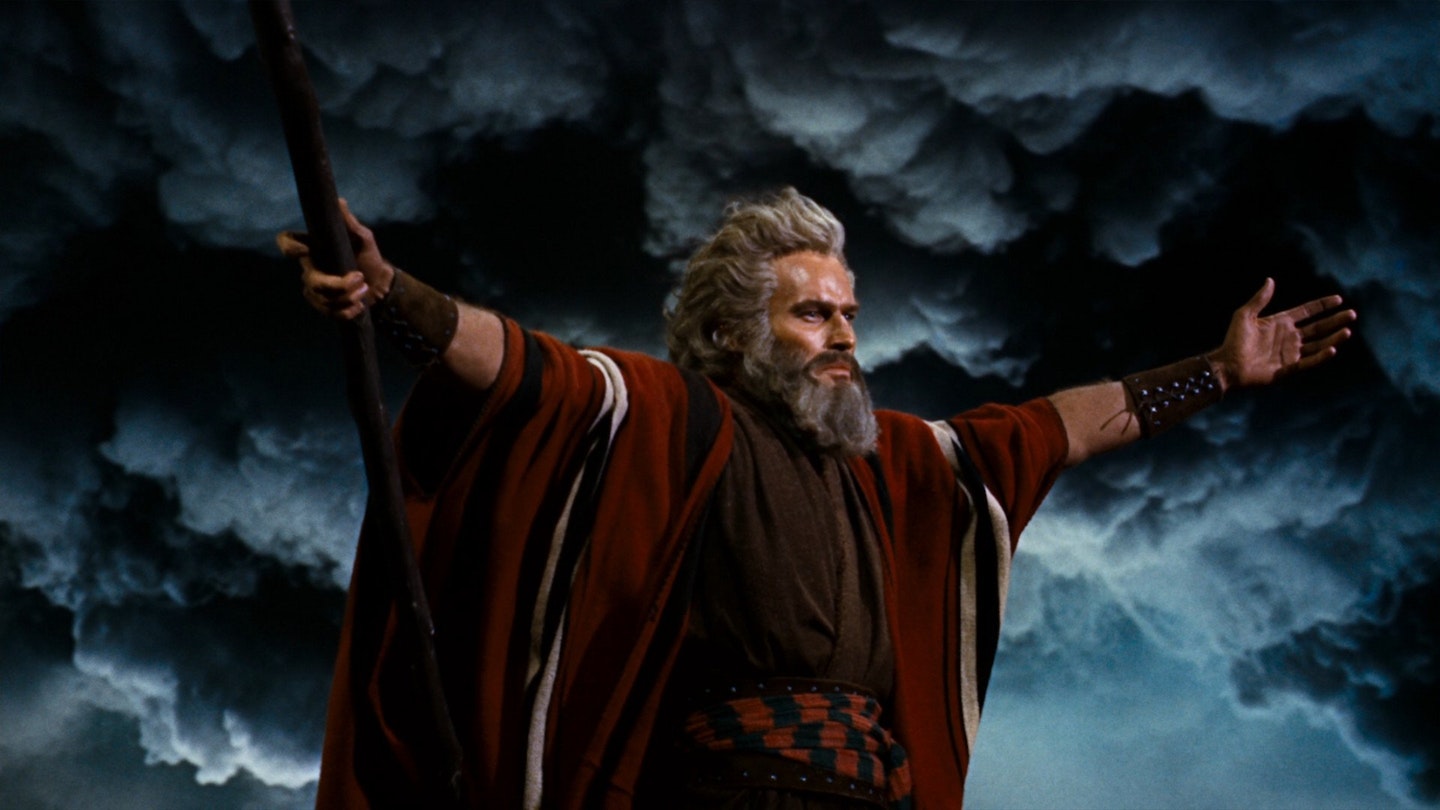The Ten Commandments (1956): A Monumental Epic of Faith, Freedom, and Filmmaking
Cecil B. DeMille’s The Ten Commandments (1956) stands as one of the most grandiose and influential epics in cinematic history. Blending religious reverence with Hollywood spectacle, the film dramatizes the biblical story of Moses with awe-inspiring visuals, legendary performances, and a narrative that continues to resonate across generations. More than just a religious film, it is a cultural milestone that showcases the pinnacle of mid-20th century American filmmaking.
At its core, The Ten Commandments tells the story of Moses (Charlton Heston), a Hebrew child raised in the royal court of Egypt who eventually discovers his true heritage and becomes the chosen messenger of God. Tasked with freeing the enslaved Israelites from the rule of Pharaoh Rameses II (Yul Brynner), Moses undergoes a spiritual transformation that leads him to confront tyranny, perform miracles, and ultimately deliver God’s law—the Ten Commandments—on Mount Sinai.

Charlton Heston delivers a commanding performance as Moses, portraying him with a blend of solemn authority and human vulnerability. His transformation from a prince of Egypt to a prophet of the Hebrews is both physical and spiritual, marked by inner conflict, moral clarity, and unwavering faith. Opposite him, Yul Brynner gives one of his most iconic performances as Rameses—an arrogant, proud ruler whose descent into desperation and defiance makes him a tragic antagonist.
One of the film’s most astonishing achievements lies in its practical effects and production scale. Filmed on location in Egypt and on colossal Hollywood sets, The Ten Commandments features thousands of extras, massive props, and groundbreaking visual effects for its time. The parting of the Red Sea remains one of the most iconic and technically impressive scenes in film history—created without CGI, using a combination of miniature models, reverse footage, and water tanks.

DeMille, known for his flair for the dramatic, delivers the film with an almost operatic tone. His voice introduces and concludes the movie, reinforcing its reverence as both a cinematic experience and a moral parable. While some modern audiences may view the pacing as slow or theatrical, the film's deliberate structure gives weight to its spiritual and philosophical themes: freedom versus oppression, faith versus doubt, and divine will versus human pride.
Elmer Bernstein’s majestic score enhances every emotional beat and epic moment, while the Technicolor cinematography by Loyal Griggs saturates the screen with vibrant, unforgettable imagery. Costume and production design transport viewers into a lavish recreation of ancient Egypt, filled with golden temples, slave labor camps, and sprawling deserts.

While The Ten Commandments has been analyzed and critiqued for historical inaccuracies and dramatized elements not found in scripture, its impact remains undeniable. It continues to be broadcast annually during religious holidays, especially around Easter and Passover, cementing its legacy as both a religious touchstone and a Hollywood masterpiece.
In the pantheon of classic cinema, The Ten Commandments (1956) is more than a movie—it’s an enduring monument to faith, freedom, and the power of storytelling on the grandest scale.
-1751857133-q80.webp)


-1752129398-q80.webp)